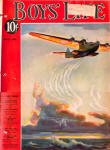
Fig. 1 - Drawing of Hale 200" Telescope at Mt. Palomar

Figure 2 - Artist's Concept of Hale 200" Telescope at Mt. Palomar
 The [George Ellery] Hale 200−inch telescope
saw first light (first official observation) atop Palomar Mountain, in southern
California, on January 26, 1949. That was a decade after this early report on its
planning appeared in a 1938 issue of Boy's Life magazine (the official
publication of the Boy Scouts of America, BSA). It held the title of the world's
largest telescope until Russia commissioned its 605 cm (238 in.)
BTA-6 in 1976. As of this writing,
the telescope with the largest light collecting capacity is the
Large Binocular
Telescope (LBT) on Mount Graham, in the Pinaleno Mountains of southeastern Arizona.
When using both 330 inch mirrors, the LBT has the same light-gathering ability as
a 464 inch single telescope and the resolution of a 897 inch wide one.
How the New 200 Inch Telescope Works
We are all acquainted with the common telescope in which a series of lenses is
mounted in a long barrel, which can be shortened by sliding the segments together.
This is technically known as a refractory type.
In building a giant telescope it is impractical to make a barrel long enough
to accommodate the giant lenses. So a system of mirrors is combined with the lenses,
and we have what is known as a reflecting telescope. The 200 inch lens of the new
telescope described on page
18 is actually a mirror.
At right is reproduced an artist's conception of how it will look set up in the
observatory, above is a diagram explaining how it works.
The starlight having entered the open tube is reflected from the 200 inch mirror
AA back to a focal point at B. An observer can reach this point of first focus by
bridge J (Fig. 2). To send the rays to a second focal observation point D (Figs.
1 and 2) a convex mirror C intercepts the rays from A and B and reflects them down
to observation point D, where Fig. 2 shows a platform suspended underneath the 200
inch mirror. The rays arriving at D come through a tube fixed in the center of the
mirror. The rays may also be extended from mirror C to E, from E to F, from F to
G and from G to H (Fig. 1).
I is another point of focus, and down inside the huge arm (an open section of
which is shown) is a chamber for spectographic work. These arms on each side of
the tube are parallel to the polar axis. The control board is located at K (Fig.
2). The great housing running at nearly right angles to the telescope is the counter
weight to the telescope. It permits the giant apparatus to be moved and aimed With
delicate control.
Here is an ad on my RF Cafe
website from the May 1948 Saturday Evening Post magazine pitching the 200"
Mt. Palomar Telescope Pyrex Mirror Blank by Corning
Posted April 12, 2024
(updated from original post
on 5/5/2012)
|



